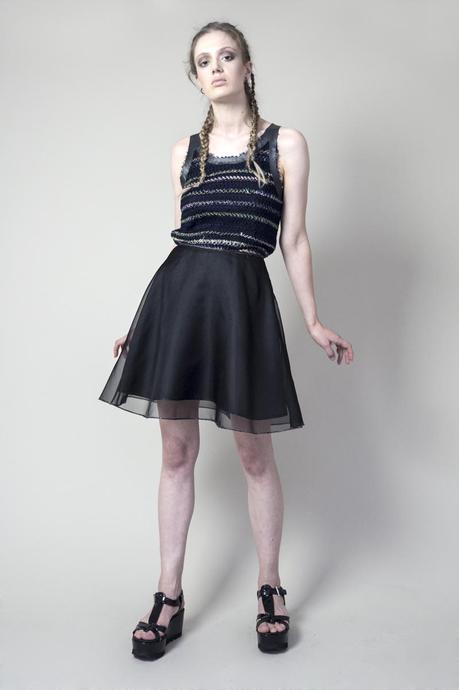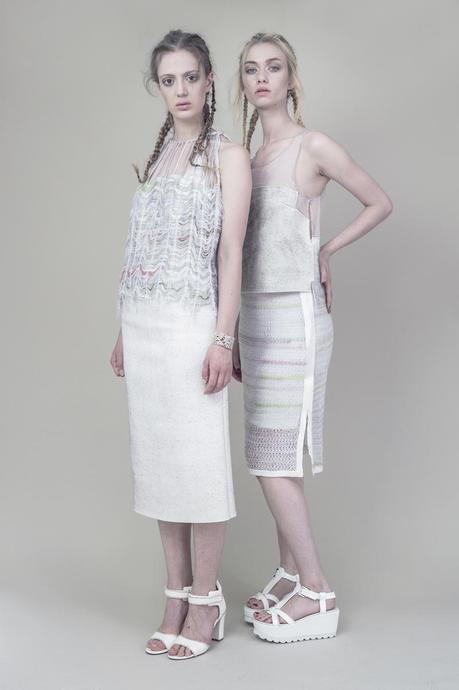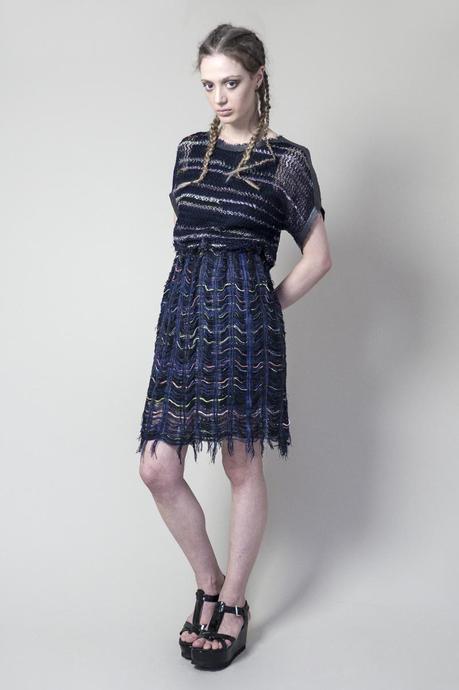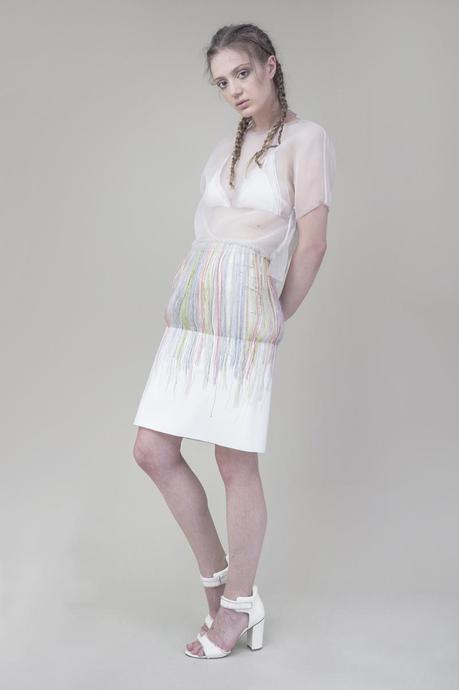Hellen van Rees is a Dutch fashion and textile designer and Central Saint Martins graduate who established her namesake label upon her graduation in 2012. Her design ethos and innovative spirit – see the “strange” textiles, as she likes to call them, she developed herself as a result of the modern interpretation of classic Chanel tweed, and the materials she uses made sustainably by using production leftovers and/or organic textiles – have earned the young designer multiple awards and accolades. She has been named as Fashion Scout’s “Ones to Watch,” has won the Humanity in Fashion Award during Berlin Fashion Week, and was selected as one of 30 designers to continue to the semi-finals of the LVMH Young Fashion Designer Prize 2014. We caught up with the young designer to discuss developing “strange” textiles, building a sustainable brand expanding into interior design in the future.

The concept of sustainability is multifold. What does it mean to you, and what made you sensitive towards sustainability practices?
During my BA I was already researching sustainability, ethical materials, animal welfare in the fashion industry etc. It went into my work as well, but not so conciously as my main motivation is to innovate and create interesting materials and textures. When I did my final MA collection at Central Saint Martins, the two really came together. I was the first to graduate with a sustainable collection. I developed a way to create textiles from loose yarns in the shape of pattern pieces, and then fuse them together into a seamless-looking result. The yarns I used were all fabric scraps taken apart or old remnant yarns from knitters. Through this method, I had found a new textile that I could develop into other textures, colors etc. This is also great because, by developing the fabric directly in the right shape, there are no scraps that would otherwise go to waste. I like this way of working because it allows me to explore and innovate, and as a creator I feel a responsibility to the environment because the choices I make create a demand for a certain product type. Thus, these choices should be as enviromental-friendly as possible. It’s not that my clients really demand it, but when they realize it, it does add an extra dimension to the product.


What prompted your decision to choose to have your brand based in Hengelo? Wouldn’t it be easier to promote your brand in a fashion capital?
It was a personal, not a tactical decision. But since I have been based there, I discovered it doesn’t make much of a difference. Most communication is done through the internet. And the fashion industry is a global one, I can’t be everywhere all the time anyway. It’s true there are some programs that are place-bound, like Fashion East or NewGen – you have to be UK based. I excluded myself from those when I left London. But since coming here, I’ve discovered a lot of textile history in Enschede (the neighbor town), and some interesting fashion and textile courses take place there as well. I recently moved my atelier to Enschede, as well, and started a collaboration with local jewelry artists that will be presented alongside my upcoming collection. So, there are a lot of advantages of being based here actually.


How have you evolved since your first collection?
The collections have grown, and become more diverse in garment types (I added knitwear, for example). Also, my work started out as very sculptural with a lot of texture. Now it’s more focused on texture and creating contrast within the textures. This was necessary, because after graduating and the first season, I had to make it into something that works as a product as well. So today there are still very special handmade garments with experimental textiles, but they work in a wardrobe.

I feel that you painstakingly select each and every material you use. How do you pick and decide on what to include in each collection?
I use very basic, natural materials to work with. Then I apply my techniques that I develop further each season. Usually, I start with the ideas I had the season before that I edited out of the collection because I want to keep it focused and not fuse too many different things at once. I always have a few ideas that don’t fit in, without anything being wrong with them. It’s these ideas and the feedback from the previous season that make the starting point.

Going through your “Work in Progress,” I read how starting from ugly colors you get the result you aimed for ultimately. Walk us through putting together a moodboard and then a collection.
With the start of a new collection, I always move my cones of knitting yarns around in different color groups. I have a lot of them so I can create virtually any color. I keep moving them around until I like what I see. The colors are always a combination of different, “flat” solid colors, which I don’t find interesting. The final result is always a blend of different tones that form a “shade” that is less definable, and has more depth and liveliness than a solid color. When I have finalized the color(s), I start weaving to get the right textiles. Then, quite immediately, I start creating the first garments. Halfway through, I start working on looks and think about what else is needed to complete the collection. There is some space for new ideas at this point, but I know very little of where it’s going. Further ideas go on to the next collection.


You are also holding a pop-up store in New York – the second for you and your label. How has NYC been embracing your work compared to Europe?
They’ve been very enthusiastic about “strange” textiles. That was great to hear because sometimes the reaction I get about my clothes is that they are too crafty. I understand the reaction, but to me it’s very important to make something different than all the mass-produced garments. That makes it more difficult to find the right stockists, since almost everything is made with generic production methods, so you get a certain feeling that my collections will not easily fit in.

Lady Gaga opted for one of your designs. How has this helped you promote your brand? What do you think on working with celebrities vs fashion bloggers?
There was a lot of publicity in the media after Lady Gaga, and that has led to some nice projects and more awareness of my label. Working with bloggers is different; you can reach a more focused audience, interested in that specific subject. So this is also great for brand awareness, but in a different way.

You have done presentations and catwalk shows. Could you weigh in for us the two situations? Where do you gravitate towards today?
I like presentations more because they offer a more personal atmosphere and interaction between the collection, me and the audience. Catwalk shows are more traditional, and I think they are only effective if there’s a quite big budget to make it special.

What are your future plans?
Well, I just moved to my new atelier, so first I’ll have a long, overdue holiday over Christmas and the new year. Then I want to finish my AW16 collection (and the production), and launch it along with a jewelry collaboration I have been working on in early February. I’ll be presenting during MFW again this season, and maybe somewhere else, as well, but I don’t know yet. My further future plans include working on more short projects aside from my collections; I’m very interested to apply my textiles in interiors also, so projects related to this would be great.


www.hellenvanrees.com
Images © Hellen van Rees
Featured image via
A.

